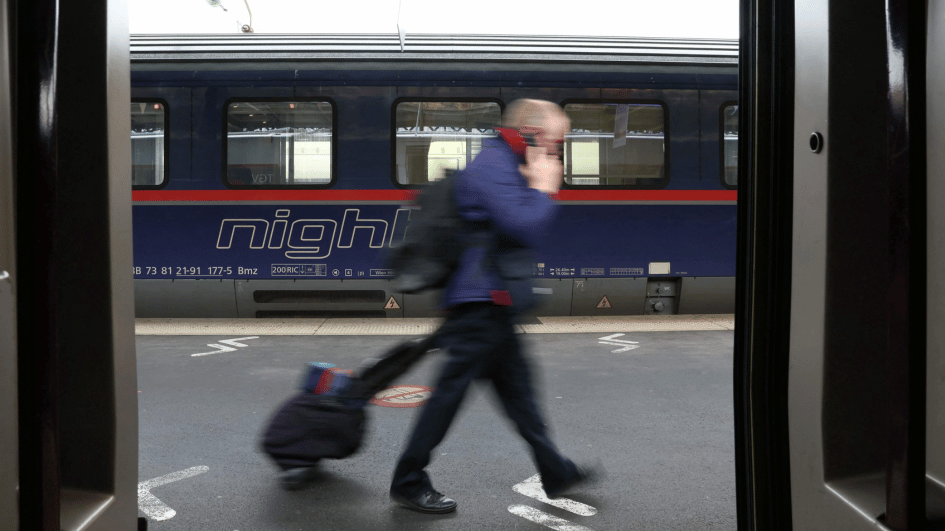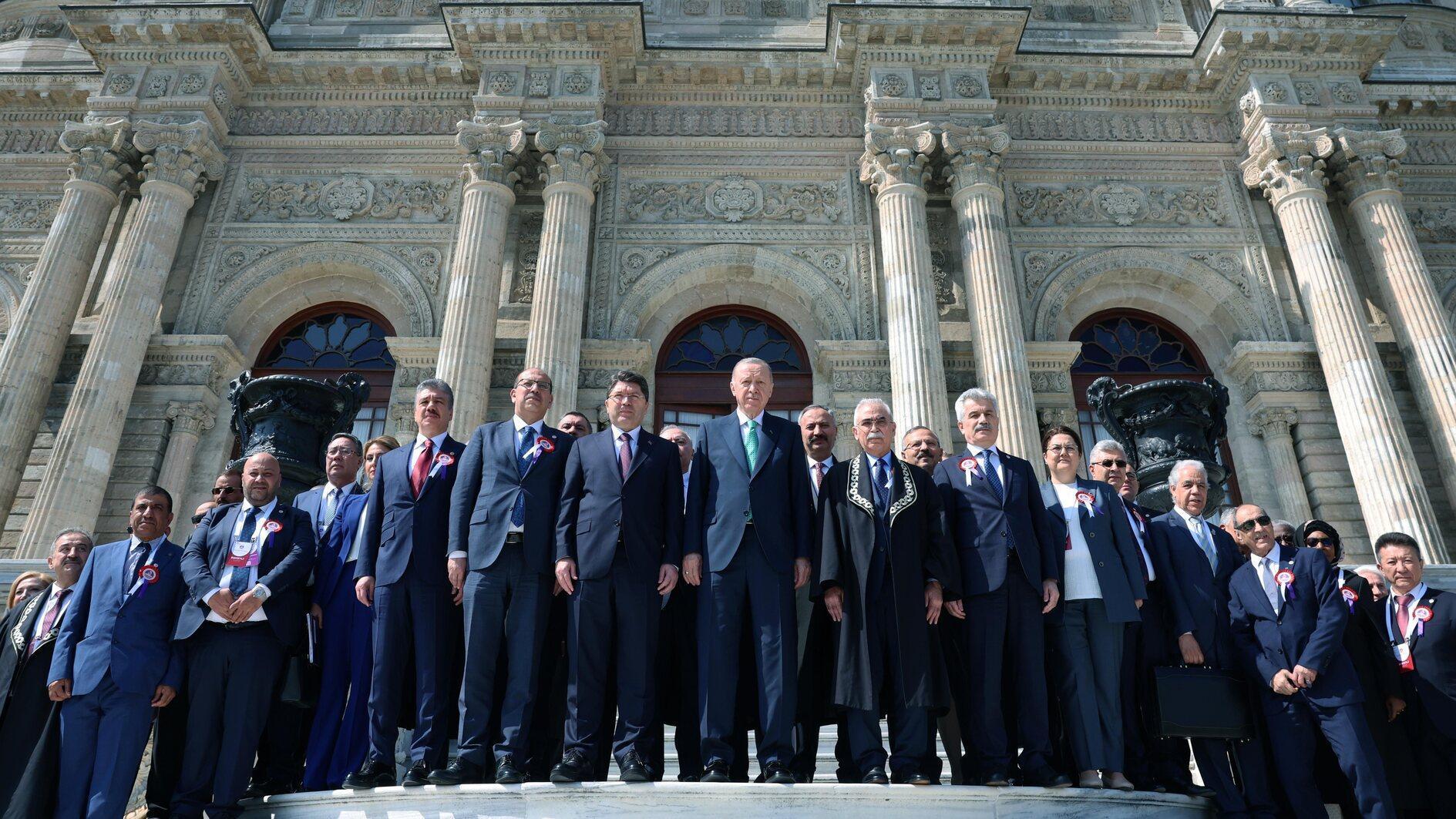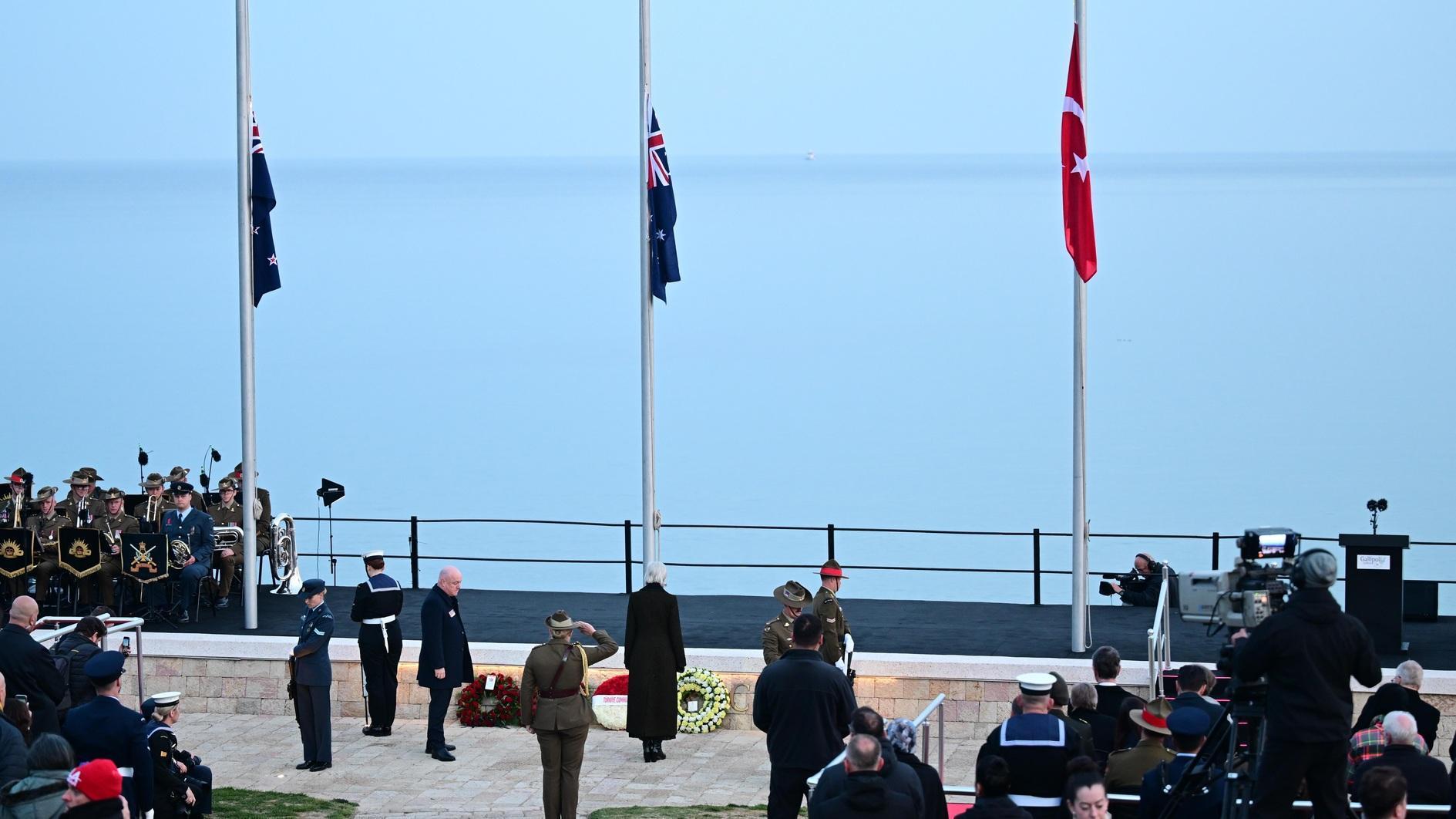'New era': Berlin-Paris sleeper train completes maiden trip
PARIS

A new sleeper service between Berlin and Paris arrived in the French capital on Dec. 12, reflecting a growing drive for night trains as an alternative to short-haul flights.
The 14-hour nocturnal trip from the German to the French capital is to run three times a week and is scheduled to become daily from October next year.
The connection is operated by French and German national train operators SNCF and Deutsche Bahn, while the rolling stock is provided by Austrian train company OeBB, whose "Nightjet" trains already crisscross central Europe.
The maiden voyage left from Berlin's main station with government ministers from Paris and Berlin as well as the chiefs of the train companies in attendance to wave it off.
The overnight connection returns nine years after the previous service was stopped - although like many night trains it is relying on government subsidies to break even.
"It's a new era for the night train alliance," German Transport Minister Volker Wessing said in Berlin.
French Transport Minister Clement Beaune, who spent the night on the train, told waiting reporters in Paris that the trip had been "magnificent.”
"This Berlin-Paris service is a symbol that we need at the moment," he said, "because we need positive, ecological and European projects.”
There are currently no direct daytime train services between Paris and Berlin.
If passengers accept one change, they can make the journey in under 8.5 hours in the daytime.
Passengers on the Austrian-provided Nightjet trains can choose between ordinary seats, six-bunk cabins and sleeper cars with private compartments for one, two or three passengers.
"It's great to get on a train and wake up in Paris," said Annika Volz, an ambassador for the Franco-German Youth Office that organizes cultural exchanges between both countries.
"It's a strong, sustainable symbol for German-French relations," she said.
Despite generating excitement beyond the ranks of rail enthusiasts, night trains remain an unreliably profitable business for operators.
In France, many lines are kept going by subsidies, with no less than 10 million euros a year going into the Berlin link.
The sector has experienced a renaissance as passengers and policy makers look for a cleaner alternative to air travel.
In 2020, French President Emmanuel Macron set the aim of opening 10 new sleeper services by 2030, with the results already visible.
[HH] Romance on the night train from Tolstoy to Bond
On the other hand, the return of the sleeper train from Berlin to Paris is a reminder of the romance of railways that has long inspired writers, musicians and filmmakers.
One of the first-ever films, the 50-second "Arrival of a Train at La Ciotat Station,” reportedly terrified audiences in 1896 who thought they were about to be squashed in their seats.
Long before and since, trains have provided a setting for love, mystery and danger in some of the most enduring works of art.
Despite the romance, night trains fell out favor early this century, and most lines in Europe closed in the 2010s.
Night trains became trendy after World War I as prices fell and Europeans sought a break after the war, said Andrew Martin, author of "Night Trains: The Rise and Fall of the Sleeper.”
A whole genre of books and films emerged, most famously Agatha Christie's "Murder on the Orient Express.”
"Night trains evoke crime, sex and intrigue," Martin said. "It's an enclosed setting, like a country house, perfect for a mystery."
Railways were a place for life-changing romance in David Lean's classic "Brief Encounter" and Richard Linklater's "Before Sunrise.”
One of the most iconic moments in Bollywood history was superstar Rajesh Khanna serenading his beloved from his jeep as she rode the Darjeeling toy train in 1969's "Aradhana.”
Alfred Hitchcock used trains repeatedly -- a place to hatch conspiracies ("Strangers on a Train"), disappear ("The Lady Vanishes") or fall in love ("North by Northwest"), the latter ending with the much-parodied sexual innuendo of a train entering a tunnel.
Journeying through the night is exotic, Martin said.
"And you can move around," he added. "You can't murder someone on a plane and then go back to your seat."
High speed and cramped spaces have made for memorable cinematic set-pieces.
Tom Cruise leapt between a helicopter and a train in the first "Mission: Impossible" and clambered up falling carriages in the most recent.
James Bond is a train enthusiast, from Sean Connery's bruising carriage fight in "From Russia With Love" to Daniel Craig plummeting off one in "Skyfall", via Roger Moore dressed, cringe-inducingly, as a gorilla on a circus train in "Octopussy".
Few have matched the chutzpah of Buster Keaton, whose dedication to realism saw him drive a real locomotive onto a collapsing bridge for 1926's "The General" -- the costliest stunt in silent movie history.
Another Bollywood landmark was the fast-paced train robbery with its galloping horses in 1975's "Sholay.”
















